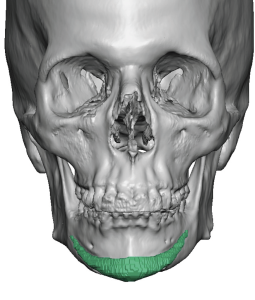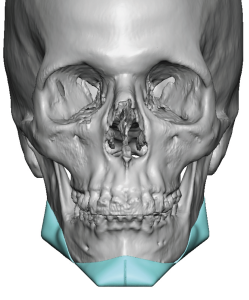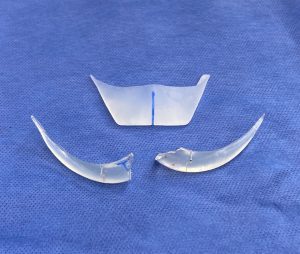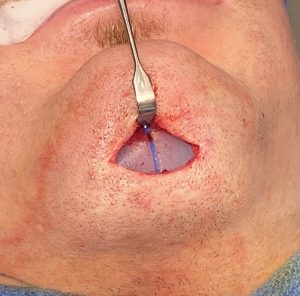Background: The most common jaw augmentation procedures, both historically and today, is the placement of a chin implant. While the primary objective is an increase in horizontal projection in most cases secondary objectives may be changes in vertical height and shape of the chin. One such secondary objective that is unique in men is the desire for a more square chin appearance. Since there is a standard square style chin implant this would seem to be a logical choice for a combined increase in projection that also adds bilateral angularity.
While perhaps effective for some I have not had good experience with these off-the-sbelf chin implants in terms of distinct square shape creation. They rely on width to make the chin square where my experience in custom facial implant designs have shown that a sharply angular chin implant shape that is narrow is what is effective in creating this aesthetic chin effect..
In total jawline augmentation there are two basic jaw shapes, linear and non-linear. A linear jawline has a smooth connection from chin to jaw angles. A non-linear jawline has a visible indentation between the chin and jaw angles. While both jaw augmentation shapes are aesthetically pleasing most patients want a smooth or linear look which is easier to achieve in s custom implant design. The non-linear jawline is more challenging to create with two basic implant designs to do so.
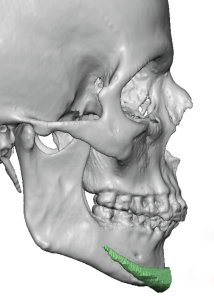
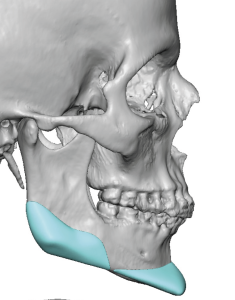
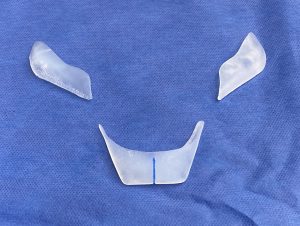
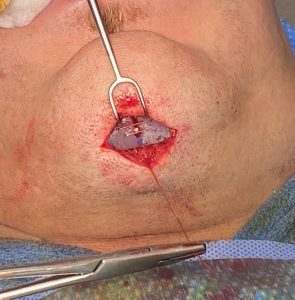
The custom jaw angles implants were placed and secured with screws through the usual intraoral posterior vestibular mucosal incisions.
This case illustrates several basic implant design principles. First =creating a square chin appearance with an implant comes from an exaggerated square shaped implant not width. A wide chin implant just makes it wider not square. In fact most naturally square chins are actually narrow with the pronounced lateral tubercles providing the maximum width. Secondly if significant vertical chin lengthening is needed only an implant designed to do so should be used. (albeit standard or a custom implant) Lastly a non-linear jawline appearance comes from a more visible chin and jaw angle shapes with a concave jawline shape between the two.
Case Highlights:
1) A standard square chin implant can not provide vertical lengthening and can not make the chin square either as it’s design is wide and too rounded.
2) A non-linear jawline implant augmentation is created by prominence of the three corners of the jawline with either no material or minimal implant material between them.
3) The three piece non-connected custom jawline implant is still placed through three separate incisions.
Dr. Barry Eppley
World-Renowned Plastic Surgeon



